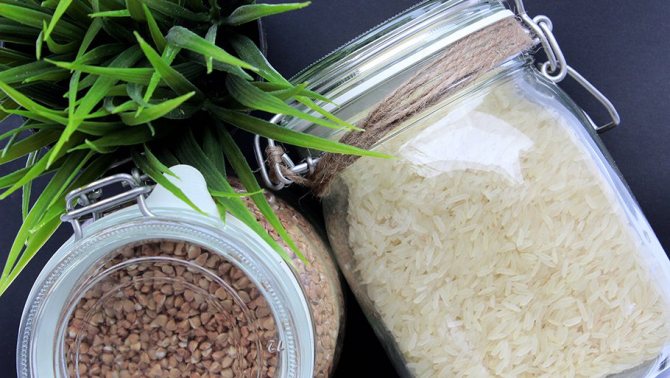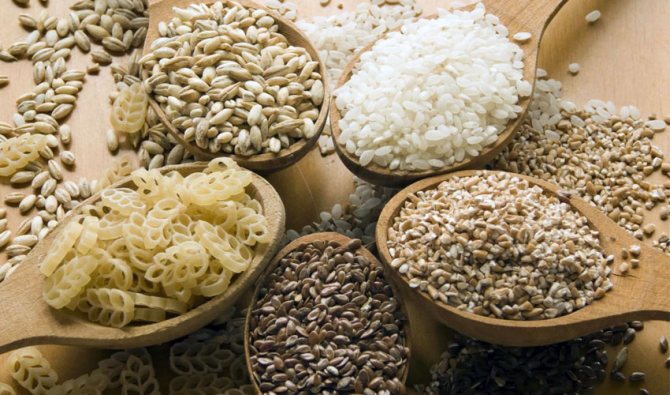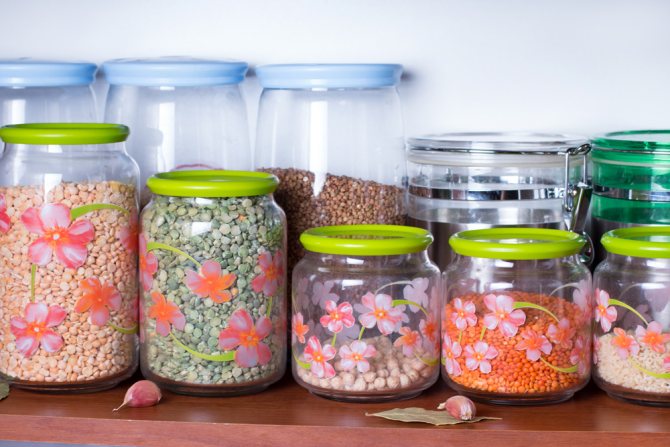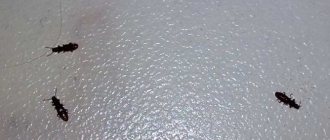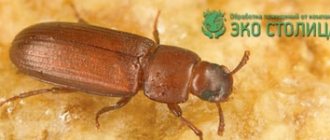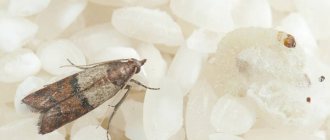The bugs in the cereal give trouble to the hostesses. Especially if women have made large supplies.
Products become unusable. Many housewives want to know why bugs start and how to get rid of them.
They appear when manufacturing facilities do not follow basic hygiene rules. Insects can develop in foods if there is insufficient sanitary control.
Some manufacturers ignore the rules of heat treatment and storage.
Choice of capacity
Some inexperienced housewives store purchased bulk products in their original packaging. And this is their main mistake. Lack of tightness is the main reason for the appearance of insects. In addition, it is very inconvenient to store cereals in such a container. Over time, the package becomes unusable, and its contents may crumble.
To avoid bugs, cereal stocks are best stored in glass jars or special containers with sealed lids. A wide variety of containers are sold on store shelves, and each hostess will be able to choose a container to her taste.
Plastic containers are lightweight, practical and convenient. When using them, the load on the locker will be minimal. Metal cans are beautiful and durable, but they have one significant drawback: rust stains can appear in them. Similar products made of stainless steel do not have this drawback, but they are also more expensive than other containers. Glass containers are convenient and beautiful and have a variety of designs. Ceramic containers are considered the best container for storing cereals. They are sealed, practical, pleasing to the eye with an attractive design. However, which container to give preference to is up to you.
How long can cereals be stored

If you buy cereals in large quantities, remember the shelf life:
- split and whole peas - 2 years;
- pasta - 2 years;
- buckwheat - 20 months;
- rice - 18 months;
- semolina - 10 months;
- millet - 9 months;
- oatmeal - 6-8 months;
- barley, wheat and other types of cereals - no more than 9-12 months.
Why is improper storage of bulk products dangerous?
One of the most important problems that housewives face when storing bulk products is the appearance of mold due to high humidity or dampness in the apartment.... It is impossible to eat foods affected by mold, because during its multiplication toxins are formed, which will cause irreparable harm to the body.
Another problem is pests in bulk products. The most common of these is the Surinamese mucoed. This brown insect most often appears under improper storage conditions in flour, different varieties of cereals, and dried fruits.
Unlike microorganisms, beetles do not poison crops, but contaminate them. But if the content of insects in the cereal is high, their waste products will lead to intoxication or digestive problems.
Flour storage tips


Products that have reached the end of their shelf life look completely normal outwardly, but their taste and useful properties have already been lost.... If you prefer to shop for the future, use products you bought long ago first.And to keep track of how much time is left before the expiration date, hang stickers on the containers with the date of the bookmark of the contents.
Have a kitchen revision once a month, during which you check the contents of the cupboards and, if necessary, throw away any spoiled ones.
Many housewives wonder if flour can be stored in the refrigerator. Flaxseed, almond or corn - yes, but experts advise placing it in an airtight container first. But wheat flour is best stored in warm dry conditions - closets, closets.
For proper storage of flour, it is better to use:
- special plastic buckets;
- containers with hermetically sealed lids;
- glass jars with screw caps;
- metal cans with a seal on the lid to create tightness.
It is better not to use paper and cellophane bags, as well as cloth bags for storing flour. They are most often pests and start.
Shelf life
Each cereal has its own shelf life. Rice stocks should not be kept for more than 1.5 years. Keep it in closed jars or linen bags in a cool dry place. And so that bugs do not start in the cereal, put 2-3 metal bottle caps or garlic in the container.
The shelf life of fast-cooking cereals depends on the packaging and technology of their production and ranges from 6 to 12 months.
Millet does not lose its taste for only 4 months. If the cereals are stored longer, then before cooking the porridge, fill it with a solution of boiling water and soda (1 tsp of powder will be needed for 1 liter of water), rinse thoroughly and dry.
It is advisable to use buckwheat in 20 months. To get the most out of it, fry it in a pan or oven beforehand.
The shelf life of semolina is 14 months. If after long storage it has lost its taste, try frying it. The usual semolina porridge will be transformed.
Oatmeal doesn't have a long shelf life. They must be used up within 4–5 months. Especially if the cereal contains additives: fruits, berries, spices or cereals.
The shelf life of quick-digesting cereals depends on the packaging and technology of their production and ranges from 6 to 12 months.
What is better to store
After the purchase, the cereals must be poured into a more suitable container, but by no means into a plastic bag. In such conditions, the cereal lacks air and it absorbs the smell of the polymer, becoming very unpleasant to the taste. If the bag is not tied tightly, then there is always a danger of insect infestation.
The best option is to store rice in tightly closed glass containers: in ordinary jars under a plastic lid or containers with ground corks. Special plastic containers are also good, but it is better not to use metal cans: they rust very quickly and do not create airtight storage conditions.
rules
In order to preserve the taste of cereals as much as possible, you must adhere to the rules presented below.
- Be sure to pour purchased bulk products into special food containers.
- The storage area should be dry and dark with good ventilation.
- Optimum storage conditions are temperatures from –5 to +5 ° С and humidity 60–70%. Make sure that the maximum temperature does not exceed +18 ° C.
- Do not keep pungent-smelling foods (smoked meats, spices, etc.) next to cereals.
See also: Optimal storage conditions for flour
How to store yeast properly?
Methods for cleaning stainless steel spoons and forks
How to choose a container
For cereals, you should definitely choose a high-quality container. This will help preserve the product for a long time.
Glass container
These containers are sold in almost all stores. They are great for storing food.It is also perfectly acceptable to use ordinary glass jars.


Plastic utensils
The indisputable advantage of such dishes is their low weight. This reduces the load on the cabinet shelf.
Stainless steel
This is a high-quality and reliable material that is suitable for storing cereals. When choosing a metal container, it is important to control that there is no rust on the surface. Only stainless steel is suitable for storing food.
Ceramics
This is the most suitable container for cereals. Natural material perfectly preserves the freshness of cereals. The only drawback is the impressive mass. Therefore, it is allowed to put such containers only on strong and durable shelves.
Canvas bags
Bags made of natural material are suitable for storing cereals. At the same time, it is recommended to put a piece of foil in them. A metal spoon is also great.
Folk tricks
People's ingenuity will help to keep stocks of cereals in proper quality. To prevent bugs and other insects from getting in bulk products, be sure to ignite them in a pan after purchase or keep them in the freezer for a day right in the packaging from the manufacturer.
Some housewives prefer to put garlic cloves, bay leaves or lemon peels in containers with grain for the same purpose. Others use pieces of foil or ordinary tablespoons instead of pungent odors. It is enough to put them in the groats, and the bugs will bypass your supplies.
To protect rice from the musty smell that may arise from long storage, put a pod of red hot pepper in the container.
In winter, bulk products can be transferred to the balcony. Low temperatures will not only protect them from bugs, but will also significantly extend the shelf life.
Take on board the listed tips, and then uninvited guests will never start in your stocks. Remember: in order to properly store cereals at home, you need to clearly know where and at what temperature it is best to keep them, what are the shelf life of each type of grain.
Storing cereals and flour at home
Loose foods and flour have a long shelf life, therefore they are popular with many housewives. But if stored improperly, they lose their taste properties, damp or become a habitat for bugs and other pests.
To preserve cereals and flour for a long time, set aside a suitable place for this:
- Kitchen cabinets. It is better to store cereals in the lower drawers, away from heat sources (batteries or stoves), since they oxidize and deteriorate faster under the influence of high temperatures.
- Storage room or any other dry room. Cereals and flour do not like dampness.
- Open shelves - provided that the room itself is well ventilated and the cereals are in a closed container.


Ways to get rid of bugs
To get rid of bugs, it is necessary to carry out a whole range of measures to destroy not only themselves, but also their offspring, waste products. And above all, it is, of course, to carry out high-quality cleaning. Armed with rags and sponges, you will have to open all kitchen cabinets and empty and process all the shelves and drawers.
It is necessary to carefully sweep away all the remnants of cereals that could wake up and wipe everything just with a dry or slightly damp cloth. After that, you can proceed to processing:
- Table vinegar does an excellent job not only with adults, but also with their larvae and eggs.
- Therefore, you need to dilute vinegar 9% approximately 1: 1 with ordinary water and wipe all surfaces with this solution. Moreover, not only horizontal, the shelves themselves, but also walk along the vertical ones, including the doors.
- Particular attention should be paid to the joints.If your furniture allows (not varnished), you can pour the solution into a spray bottle and spray hard-to-reach joints, for example, in the area of the hinges on the doors.
- Then dry the furniture thoroughly so that it does not get wet and does not deteriorate.
- Soda brine can be used instead of vinegar. Dissolve in a liter of warm water a couple of tablespoons of ordinary rock salt and a spoonful of baking soda, stir well, the solution is ready.
Now let's move on to the storage containers:
- If you choose glass or plastic containers for storage, then you need to not only wash them, but also thoroughly pour boiling water over them, which will kill the eggs of the bugs.
- If you store cereals in cloth bags, then they should not only be washed, but also boiled.
- It is better not to start anything with plastic bags, but just throw them out and directly into the garbage chute, and not into the trash can in the kitchen, from where the parasites will quickly crawl back.
We suggest you familiarize yourself with: Bugs in cereal or flour: a photo, how to get rid of and what to do
After the main hiding places of the bugs are eliminated and processed, it is worth moving on to the rest of the items. Wipe everything with vinegar solutions: refrigerator, microwave and other appliances and furniture:
- Feverfew helps well, it is a flower powder made from Caucasian chamomile, absolutely organic and safe for humans and pets. It should be sprayed gently in cupboards. To do this, you can simply pour a little on a dry palm and gently blow in the direction of the shelf you need. Try to ensure that the powder gets into the crevices and joints.
- If your pest is a food moth, then to the above procedures, it is necessary to add treatment with any chemical agent from an ordinary moth. Moreover, you also need to sprinkle carpets, rugs, upholstered furniture, if any.
If you choose glass or plastic containers for storage, then you need to not only wash them, but also thoroughly pour boiling water over them, which will kill the eggs of the bugs.
How to determine if bugs have appeared
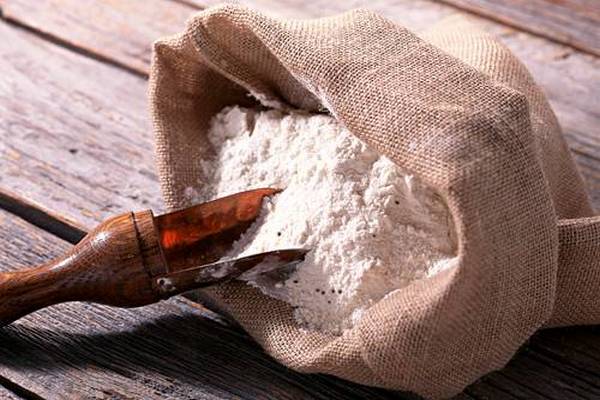

Signs of the presence of uninvited "guests" in flour can be different. At the stage when insects are already visible to the naked eye, the product does not even need to be saved. Even if all pests are eliminated, the flour will have an unpleasant taste and smell. After that, it is suitable only for animals, and even then not always.
The following types of insects can hit stocks:


- bread grinders. These bugs "move" into the house from bakeries and bread factories, where sanitary and hygienic standards are not observed. They enjoy sushi, gingerbread, croutons, bread with pleasure, and when the "family" becomes larger, the use of flour and other nearby products begins. Over time, they spread throughout the home and begin to eat houseplants, clothes, curtains, and even books. You can determine the presence at the initial stage by regularly examining the windows. These insects are very fond of light and constantly fly towards it. They look like fruit midges, only much smaller than them;


- red flour eater. This beetle also enters the home from factories, shops, grain warehouses and mills. It spreads very quickly and destroys stocks too, but only if the house is humid. He does not eat dry food, so if you follow the rules for storing flour, you can not worry about such an attack. Even if the pest enters the house, it will quickly die due to the lack of suitable food;


- flour beetle. This is the most dangerous and most common creature for flour and other food supplies. Most of all they like flour, semolina, starch, but over time, other cereals can also be affected. The bugs are up to 4 mm in size and have a brown-gold back;
Important!
Foods affected by flour beetle are dangerous to eat. They can provoke allergies and very severe poisoning.


- food moth.This pest multiplies very quickly and destroys food. It starts with dry and then moves on to all other stocks. It is very difficult to remove an insect. Moths multiply too quickly.
In order to timely determine the presence of pests, it is necessary to regularly inspect the flour itself, and the place of its storage, and the entire room. You need to start worrying if not only bugs appear in the flour, but also lumps or cobwebs, if small wet specks, crumbs of unknown origin form on the walls and shelves, as well as the corpses of small midges on windowsills and other surfaces.
Shelf life of different types of flour
For many, the word "flour" is associated only with wheat. In fact, there are a lot of its types. The powder is made from various grains, nuts, seeds. There are even vegetable and berry options.
The shelf life of flour of different types is not the same. It depends on the following factors:
- the quality of raw materials and the conditions for their processing and storage;
- the type of product that was ground into powder;
- the degree of grinding;
- the presence of preservatives and other chemicals in flour;
- quality of packaging;
- storage conditions of the product in packaged form and after opening.
What is the shelf life of flour according to GOST?
- Wheat premium, bird cherry and coconut - 1 year.
- Pea and linseed - 10 months.
- Wheat 1st grade, rye, pancake, buckwheat, oatmeal, pumpkin, rice, barley - six months.
- Whole wheat, corn and almond wheat - 2-3 months.
When buying flour from a store, pay attention to the production date and shelf life indicated by the manufacturer. If the last indicator has reached a critical level, it is better to look for a more recent product. Expired flour should not be eaten.
How to prevent the appearance of insects in flour?
In order to prevent bugs from contaminating flour, you need to adopt the following techniques:
- Salt is an excellent insect repellent. If the bags intended for storing flour are pre-soaked in a concentrated salt solution and dried, the risk of bugs will be minimal. You can also cover the contents of a glass, plastic or metal container with such a cloth.
- The smell of garlic also repels insects, so you can put a few cloves directly into the flour.
- Dried calendula flowers are another effective remedy. True, it is used only if the flour is stored in a paper or rag bag.
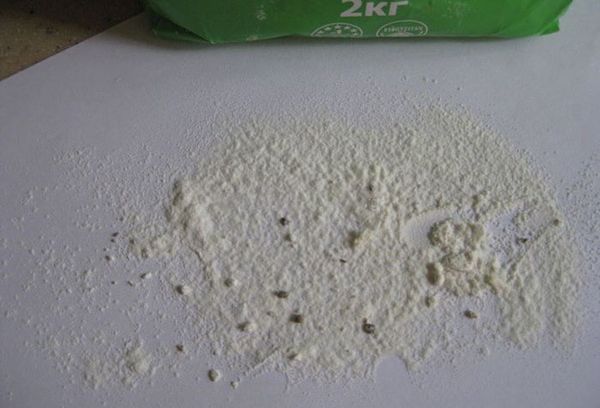

There is another interesting method of preventing the appearance of insects in stocks - several large, pre-cleaned stainless steel nails are vertically dipped into the flour.
Even when all the rules for storing flour were properly followed, at the first signs of problems, it is better to get rid of the product. If the composition is covered with a crust, its color or smell changes, large lumps appear, no methods of mass resuscitation will help. The use of such a component can lead to food poisoning.


